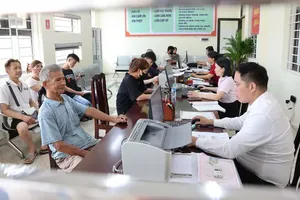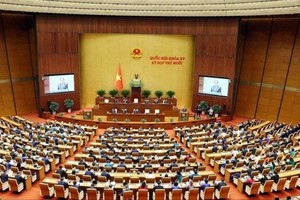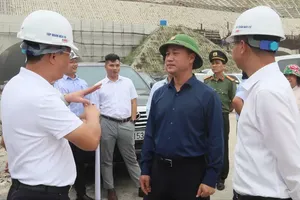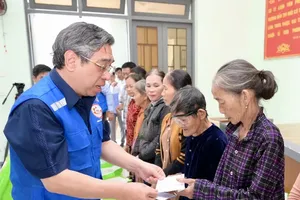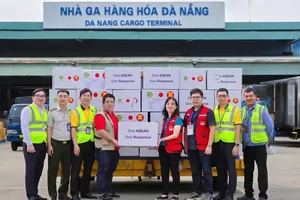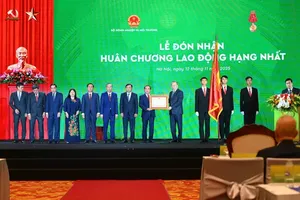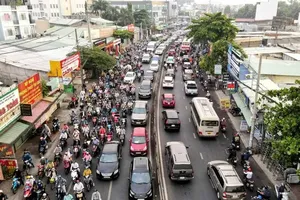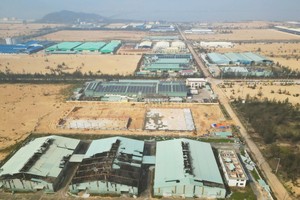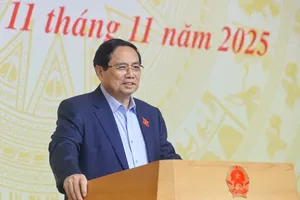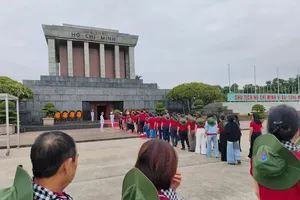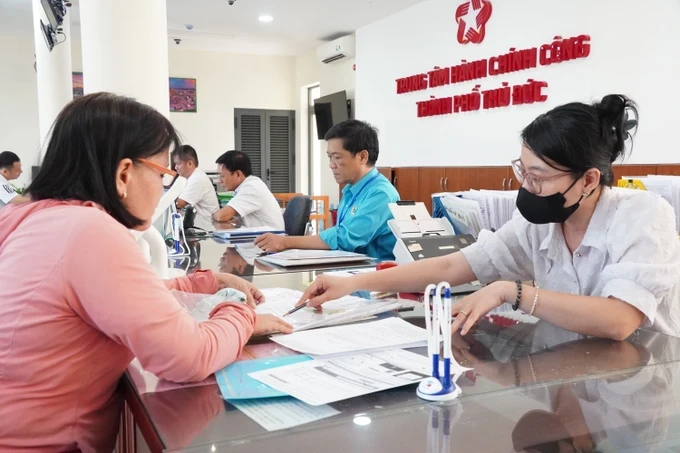
In Hanoi, following the consolidation of 56 commune-level administrative units, the work of cadres and civil servants proceeded smoothly, and residents were facilitated in accessing streamlined administrative procedures.
Nguyen Khac Chieu, Party Secretary of My Xuyen Commune (a newly formed unit in My Duc District, Hanoi, created from the merger of My Thanh and Bot Xuyen Communes), reported that after the consolidation, commune cadres and civil servants adhered to regulations and promptly commenced their assigned duties. The one-stop-shop center was equipped and staffed to ensure the efficient processing of administrative procedures for residents.
The newly formed Truc Bach Ward resulted from the merger of the former Nguyen Trung Truc and Truc Bach Wards. Party Secretary Nguyen Dan Duy of Truc Bach Ward Party Committee noted that the merger doubled the workload. However, he also emphasized the increased resources and favorable conditions for promoting socio-economic development, improving public services, and accelerating administrative reforms and streamlining the apparatus.
In early 2025, HCMC finalized the consolidation of 80 commune-level administrative units (80 wards across 10 districts) into 41 new wards, a reduction of 39 and a decrease of over 1,000 cadres, civil servants, public employees, and non-specialized personnel. Immediately following the restructuring, operations in the new wards proceeded seamlessly, with residents experiencing no significant difficulties concerning documentation due to the administrative changes.
For instance, at the People’s Committee of Ward 1, Go Vap District (formed by merging Wards 4 and 7 into Ward 1), Nguyen Thi Thanh Dung (formerly of Ward 4) spent only ten minutes waiting to obtain an certified copy of her birth certificate. Duong Van Kim, Chairman of the People's Committee of Ward 1, explained that after the three-ward merger, the ward, now serving over 91,000 residents, prioritized a streamlined one-stop-shop service center for administrative procedures. He confirmed that residents can access all such procedures without difficulty.
Thu Duc City, Vietnam’s first “city within a city”, established in 2021 by consolidating the three districts of 2, 9, and Thu Duc, exemplifies Resolution 18-NQ/TW implementation. The initial consolidation reduced departments from 36 to 12, cutting personnel by 22 percent (205 positions).
Following Resolution 98/2023/QH15, Thu Duc City piloted its own structure, creating 15 specialized departments and a public administrative center, totaling 16 departments. Further reductions of 20 percent in Party agencies and 15 percent in government agencies are planned. Party Secretary Nguyen Huu Hiep of this city emphasized that the restructuring aligns with Resolution 18’s principles of multi-tasking agencies and single-agency responsibility, ensuring the organizational model fits each agency’s specific characteristics and functions.
Pursuant to the policy of resolutely eliminating intermediary organizations, localities have largely completed the development of merger plans and proposals for streamlining the organizational apparatus.
In Quang Ninh Province, for instance, the provincial Party Committee and Party organizations implemented a restructuring plan that reduced two advisory agencies to the Provincial Party Committee, three Party Civil Affairs Committees, and seven Party Committees, while adding one Party Committee directly under the province.
Agencies and units under the provincial People’s Committee implemented a plan reducing six focal points of specialized agencies at the departmental level and are projected to reduce approximately 25 percent of departments after the merger. Quang Ninh Province proposed to maintain the operational model of the Quang Ninh Coal Party Committee (due to its local specificity) directly under the Provincial Party Committee, while other areas followed the national plan.
Currently, the Ministry of Public Security is also moving towards reducing intermediate levels in localities, strengthening the grassroots level, and reorganizing forces. Minister of Public Security Luong Tam Quang has requested the urgent finalization of a project and plan on adjusting the functions, tasks, powers, and organizational structure of the Ministry of Public Security and streamlining the organizational apparatus of public security at all levels. This plan will be submitted to competent authorities for approval and implemented with the aim of reducing intermediate levels, strengthening the grassroots level, and reorganizing forces.
Assoc. Prof. Dr. Le Minh Thong, former Assistant to the Chairman of the National Assembly, voiced that a streamlined, professional state apparatus is crucial for effective legislative, executive, and judicial functions. The Party should lead, not replace, the State, which must be lean, efficient, and staffed by highly qualified, professional cadres. Performance-based evaluations are essential, with rewards for success and mechanisms for removing underperforming, undisciplined, or discredited individuals.
Assoc. Prof. Dr. Tran Quoc Toan, former member of the Central Theoretical Council commented that rapid, sustainable development requires a streamlined, efficient state apparatus (political system) with high accountability and professional, honest, disciplined, dedicated, and innovative officials. Comprehensive development, encompassing economic, political, social, and environmental aspects, necessitates transparent, effective, and efficient state institutions and public administration.
Deputy Director Nguyen Thi Thu Hoe of the Department of Legal Document Inspection under the Ministry of Justice noted that implementing Resolution 18-NQ/TW necessitates reviewing, amending, supplementing, and finalizing Party and State regulations on the organization of the apparatus at all levels, branches, and localities, ensuring synchronization and uniformity.
Ministries and ministerial-level agencies reviewed 5,026 documents; localities reviewed 2,828 legal documents issued by People’s Councils and People’s Committees at the provincial and district levels that are affected by the arrangement of the organizational apparatus. To ensure the smooth operation of the state apparatus, the urgent task is to process the aforementioned system of legal documents.
